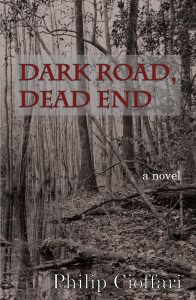As I look f orward to my second year chairing the Mentor Program, I took some time to chat with the authors of our two top manuscripts from last year’s program. Since the Mentor Program is all about writers helping other writers, I thought it might be fun to switch things up a little and discuss how our mentees have learned from other writers’ books as well. This week, I’m talking with Philip Cioffari, whose top-placed manuscript was Night and its Burdens.
orward to my second year chairing the Mentor Program, I took some time to chat with the authors of our two top manuscripts from last year’s program. Since the Mentor Program is all about writers helping other writers, I thought it might be fun to switch things up a little and discuss how our mentees have learned from other writers’ books as well. This week, I’m talking with Philip Cioffari, whose top-placed manuscript was Night and its Burdens.
Cioffari is the author of the novels: Dark Road, Dead End; Jesusville; Catholic Boys; and the short story collection, A History of Things Lost or Broken, which won the Tartt Fiction Prize, and the D. H. Lawrence award for fiction. His novel The Bronx Kill is forthcoming in January 2017. His short stories have been published widely in commercial and literary magazines and anthologies, including North American Review, Playboy, Michigan Quarterly Review, Northwest Review, Florida Fiction, and Southern Humanities Review. He has written and directed for Off and Off-Off Broadway. His Indie feature film, which he wrote and directed, Love in the Age of Dion, has won numerous awards, including Best Feature Film at the Long Island Int’l Film Expo, and Best Director at the NY Independent Film & Video Festival. He is a professor of English and director of the Performing and Literary Arts Honors Program at William Paterson University.

TOP 10 BOOKS I’VE LEARNED FROM by Philip Cioffari
• The Great Gatsby (Fitzgerald) — for the grace and simplicity of its sentences
• The Sound and the Fury (Faulkner) — for the lushness of his descriptions of place as well as his use of internal monologue/stream of consciousness
• A Streetcar Named Desire (Williams) — for its depiction of a character’s loneliness and desperation
• Other Voices, Other Rooms (Capote) — for capturing the mysterious world of adults from a child’s point of view
• A Catcher in the Rye (Salinger) — for its depiction of a tender-hearted kid with a tough façade, for the way it blends contradictory aspects to create a layered character
• The Heart of the Matter (Greene) — for his ability to combine both thoughtful, in-depth character studies with a gripping plot
• The Heart Is a Lonely Hunter (McCullers) — for its sympathetic re-creation of a teenager’s introduction to the adult world
• The Stories of Flannery O’Connor — for her ability to use the grotesque as a way to depict the human condition
• The Stranger (Camus) — for his minimalist style which allows him to convey so much with so few words
• Cutter and Bone (Thornburg) — for his ability to tell a mystery/crime story in a completely original way
What about you? Have you learned from any of these books? Which ones? Or are there other books that have taught you important lessons about your craft? Please join in the discussion and tell us what books you’ve learned from and why.
— Erica Obey
Erica Obey earned a PhD in Comparative Literature and published a book and articles on Arthuriana and 19th-century women folklorists, before she decided she would rather be writing the stories herself. Her first mystery novel, Back to the Garden, was published in 2013. She currently teaches courses on mystery fiction and Arthurian romance at Fordham University.
